Hannah Byron's Blog, page 10
June 5, 2022
Recommended Books on SOE

The books I read for The Highland Raven
Now I’ve finished writing The Highland Raven and sent it off to my editor, let me share with you the books I studied for the 5th book in The Resistance Girl Series. After all, I made a deep-dive into Winston Churchill’s Secret Operations Executive aka SOE.

The Highland Raven is now on preorder
The books below certainly aren’t a comprehensive list on the topic. Thousands of books have been written on SOE as it continuous to fascinate us until today. Maybe they’re also not the best books written on this part of irregular warfare during World War 2, but they were most helpful for my research. Some of them I will reread for the last book in series (The London Agent) where I will return to Great-Britain and SOE. I’ve given the links to the Amazon US store but they’re probably available elsewhere. Just click on the picture to get the link.
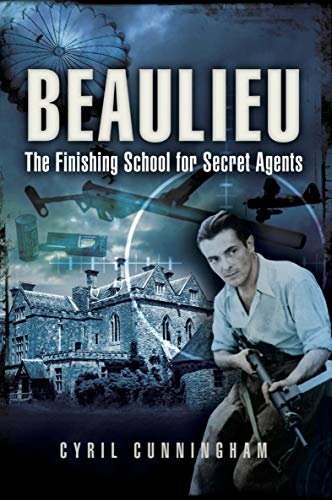
Beaulieu: The Finishing School for Secret Agents
This book is the outcome of a difficult investigation, and a very remarkable story it is too. It was at Beaulieu that a large number of agents from Britain and the Nazi-occupied countries of Europe were trained in the delicate arts of secret inks, coding, clandestine communications and black propoganda, along with such nefarious skills as silent killing, housebreaking, safe-blowing, forgery, unattributable sabotage and survival techniques. And they were taught by some extraordinary characters including former spies, a professional burglar and the infamous Kim Philby, who played a significant role in the design of the curriculum.

A Life in Secrets: Vera Atkins and the Missing Agents of WWII
From an award-winning journalist comes this real-life cloak-and-dagger tale of Vera Atkins, one of Britain’s premiere secret agents during World War II.
As the head of the French Section of the British Special Operations Executive, Vera Atkins recruited, trained, and mentored special operatives whose job was to organize and arm the resistance in Nazi-occupied France. After the war, Atkins courageously committed herself to a dangerous search for twelve of her most cherished women spies who had gone missing in action. Drawing on previously unavailable sources, Sarah Helm chronicles Atkins’s extraordinary life and her singular journey through the chaos of post-war Europe. Brimming with intrigue, heroics, honor, and the horrors of war, A Life in Secrets is the story of a grand, elusive woman and a tour de force of investigative journalism.
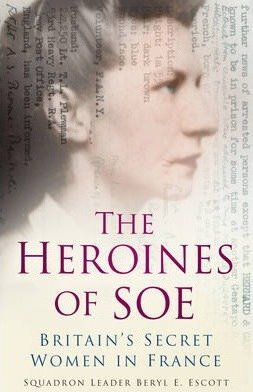
The Heroines of SOE: F Section, Britain's Secret Women in France
Britain’s war in the shadows of male spies and subterfuge in the heart of occupied France is a story well known, but what of the women who also risked their lives for Britain and the liberation of France? In 1942 a desperate need for new recruits, saw SOE turn to a previously overlooked group – women. These extraordinary women came from different backgrounds, but were joined in their idealistic love of France and a desire to play a part in its liberation. They formed SOE’s F Section. From the famous White Mouse, Nancy Wake, to the courageous, Noor Inayat Khan, they all risked their lives for King, Country and the Resistance. Many of them died bravely and painfully, and often those who survived, like Eileen Nearne, never told their stories, yet their secret missions of intelligence-gathering and sabotage undoubtedly helped the Resistance to drive out their occupiers and free France. Here, for the first time is the extraordinary account of all forty SOE F women agents. It is a story that deserves to be read by everyone.
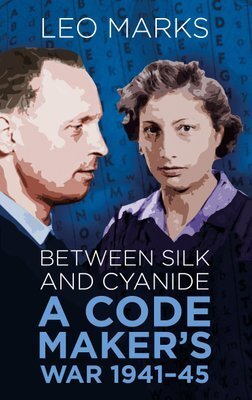
Between Silk and Cyanide: A Code Maker's War 1941-45 (Espionage)
In 1942, with a black-market chicken under his arm, Leo Marks left his father's famous bookshop, 84 Charing Cross Road, and went to war. He was twenty-two and a cryptopgraher of genius. In Between Silk and Cyanide, his critically acclaimed account of his time in SOE, Marks tells how he revolutionised the code-making techniques of the Allies, trained some of the most famous agents dropped into France including Violette Szabo and 'the White Rabbit', and why he wrote haunting verse including his 'The Life that I have' poem. He reveals for the first time the disastrous dimensions of the code war between SOE and the Germans in Holland; how the Germans were fooled into thinking a Secret Army was operating in the Fatherland itself, and how and why he broke General de Gaulle's secret code. Both thrilling and poignant, Marks's book is truly one of the last great Second World War memoirs.
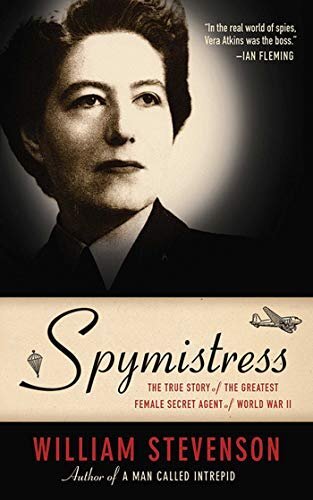
Spymistress: The True Story of the Greatest Female Secret Agent of World War II
She was stunning. She was ruthless. She was brilliant and had a will of iron. Born Vera Maria Rosenberg in Bucharest, she became Vera Atkins. William Stephenson, the spymaster who would later be known as “Intrepid,” recruited her when she was twenty-three.
Vera spent most of the 1930s running too many dangerous espionage missions to count. When World War II began in 1939, her numerous skills made her one of the leaders of the Special Operations Executive (SOE), a covert intelligence agency formed by, and reporting to, Winston Churchill. She trained and recruited hundreds of agents, including dozens of women. Their job was to seamlessly penetrate deep behind the enemy lines.
As General Dwight D. Eisenhower said, the fantastic exploits and extraordinary courage of the SOE agents and the French Resistance fighters “shortened the war by many months.” They are celebrated, as they should be.
But Vera Atkins’s central role was hidden until after she died; author William Stevenson promised to wait and publish her story posthumously. Now, Vera Atkins can be celebrated and known for the hero she was: the woman whose beauty, intelligence, and unwavering dedication proved key in turning the tide of World War II.

SOE: Churchill’s Secret Agents (paperback)
The Special Operations Executive (SOE) was one of the most innovative British creations of the Second World War. Its mission was to export resistance, subversion, and sabotage to occupied Europe and beyond, disrupting the German war effort and building a Secret Army which would work in the shadows to help defeat the Nazis. Potential agents were put through intensive paramilitary and parachute training, then taught how to live clandestinely behind enemy lines, to operate radios and write in secret codes. They lived in constant fear of arrest, and of betrayal by treacherous collaborators. This book uses rare images from the collections of The National Archives and the Imperial War Museum to illustrate the lives of the men and women who made up the SOE, their rigorous training, the clever gadgets they used, and their lives behind enemy lines.
May 21, 2022
Finished writing book #5 at 123,068 words

The Highland Raven
Book #5 in The Resistance Girl Series
Yesterday evening (20 May ‘22) around midnight I finished the first draft of The Highland Raven at a whopping 123,068 words. (round 1) Now I’ve got a few weeks to edit the story (round 2) before my wonderful editor Michele at TwoBirdAuthorServices gets the opportunity to rip the manuscript apart (round 3) and I may assemble it again after her ruthless job (round 4).
Then the newly-assembled book goes back to Michele for the line editing (round 5), after which I implement her suggestions (round 6). Then it’s my ARC team’s job to spot the last inconsistencies, typos, grammar issues and the likes (round 7) and finally I polish off the last things (round 8) before formatting the document and uploading it onto Amazon.
The 8 rounds are carried out in a matter of 4 months as The Highland Raven is scheduled to launch on 27 September.
Thank you everyone who already preordered Sable’s story. Almost 350 copies! 🙏 I hope she will not disappoint you with the fifth book in The Resistance Girl Series.😊
Every time, I tell myself that this was the hardest book I’ve written so far, and it’s true again this time. The main character, Sable Montgomery, was in a league of her own and I had some trouble getting to find her softer, more accessible side as she was one tough cookie. But I think I found what made her tick.
More on my research into the secret agents in World War 2 next week.
May 15, 2022
Researching D-Day

Fun facts but based on historical entries
I’m currently in the throes of finishing the last chapters of the first draft of The Highland Raven. By 6 June 1944 my main character Sable Montgomery, codenamed Raven - le Corbeau Noir - has been in France as an SOE agent for over two years and her BROADCAST network has created havoc and confusion to deter the German advance towards Normandy.
Before finally flying back to England and safety, Sable really wants to be close to the Allied landings on the beaches of Normandy. So, she is in Caen where they have been protecting the bridges over the river Orne and the canal through Caen (Pegasus Bridge).
For this part of my book I was close-reading about the events in the early morning of D-Day.
Thought I’d share what some of key players were up to. Just for fun.
The Highland Raven is currently on preorder and will come out on 27 September 2022.
Preorder The Highland Raven here
From troubled society girl to diehard SOE agent.
Scotland, January 1938
Staying strong and picking up your life, when you’re brought to ruin before even turning twenty, seems an impossible pursuit. Sable Montgomery sees only one way out. Pretend nothing happened, though the scars are deep, literally engraved on her body.
In a desperate dash for a new start, she accepts a marriage proposal from childhood friend Freddie, but their plans are thwarted. Instead, Sable ends up at a finishing school in Switzerland. High time to party and bully the less popular girls. Until a skiing accident and World War 2 handcuff Sable’s society life and all the fun stops.
On her return to London, a brush with secret agent recruiter Anna Adams sets the drifting Sable on a new course and to a new love. William “wild Bill” Mitchell – the Scotsman who trains the SOE agents - wins her heart. And though it’s love at first sight, the past won’t leave Sable alone.
When she’s forced to face her biggest enemy, SS-Hauptsturmführer Joachim Von Henkell, in a one-to-one battle, her heart is ripped open all over again.
With her tough exterior and survival instinct, Sable ultimately fights her way to the top of Churchill's secret agents’ ladder. Even Anna can be proud of her. But when the war is over, Sable has but one wish. To find the girl she was forced to leave behind.
The Highland Raven is a young woman’s spellbinding story of heartbreak and revenge, in which her fight against the Nazis proves to be both a blessing and a curse.
May 7, 2022
Give me the 19th Century

Two weeks ago, I held a poll in my weekly Newsletter asking my readers which Historical Fiction period was their favorite. Unfortunately, the survey gave me only 9 options - which was way too limited - but I told the voters they could opt for more than 1 choice. Only 15% of my 2,000 subscribers answered my call, but I still consider this a valid outcome.
The results really surprised me. What about you?

It means that my readers have a strong preference for books set in the 19th century. Hum, I write WW2 novels. 🤓😅
But funnily enough, I agree with them. I’m fascinated by 19th century literature, not just the classics like Jane Austen, George Eliot, Stendhal, Tolstoy, the Brontë sisters, Thomas Hardy, Flaubert. You name it.
Also as an author, I’d love to write books set in Victorian England. Now I’m even more convinced that one day I will embark on a 19th century series.
April 30, 2022
I wrote 60,000 words in April!

This month I took part in Camp Nano, a writers community where you can set your own word goal for a month. Mine was 60K words and I made it today, on the threshold. It was tricky business if I’d make it at all because I also made a research trip for my next book to the UK this week (more on that later).
But I did make it.
Now, I’m dead-tired and stinking proud. The first draft of The Highland Raven is three quarters written. Yeah!!
So what is Nano?

The NaNoWriMo logo
National Novel Writing Month (mostly called NaNoWriMo) is a U.S.-based nonprofit organization that promotes creative writing around the world. The most important happening is the annual, international creative writing event in which writers are urged to write a 50,000-word manuscript during the month of November.
Focusing on the length of the work in progress rather than the quality, you are spurred on with your buddies to finish your first draft quickly so it can be edited later. Nano started in 1999 with 21 participants. Today there are almost 500,000 annual participants.
You register for free on the Nano website, where you fill out your profile and information on your current project and other novels. There are also regional events all over the world and in many languages.
Apart from the November event, there are two events in the months of April and July, called Camp Nano, where you can set your own goal. That’s why I did 60,000 words this month. In July I will also participate but set a more modest goal.
April 23, 2022
Death on the Sunny Côte d’Azur
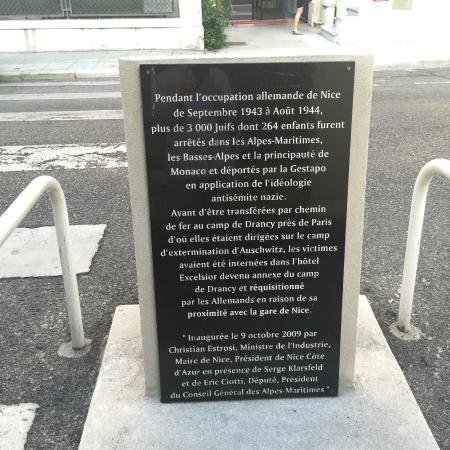
The memorial plaque across the street from Hotel Excelsior
When secret agent Sable Montgomery in The Highland Raven, book #5 in my Resistance Girl Series (now on preorder) starts her mission as an SOE agent in occupied France, she arrives from Gibraltar in a felucca on the French Riviera. She stays at the Excelsior Hotel in Nice.
This part of the book takes place at the beginning of 1943 when the Côte d’Azur was still under Italian rule. While doing research, I stumbled upon the chilling history of the Hotel Excelsior when it came under German occupation later that year.
Today, the magnificent Belle Époque hotel with its four stars and perfect location in the city center and near the Mediterranean, is a happy hub where tourists come to enjoy the sunshine and the lavish French Riviera.
But across the street from the hotel, a commemorative plaque reveals a horrendous WW2 tale that would squelch all yearning for summer delights. The story of what purpose this hotel served under the notorious Nazi war criminal Alois Brunner.
When France fell in June 1940 and France was divided between the German-occupied North and the Vichy puppet Government in the south, Nice was in the unoccupied zone. Despite the anti-Jewish legislation the Vichy regime put in place, the Riviėra became a safe haven for Jewish refugees who fled the Nazis.
In 1942 the Allies invaded North Africa and the Germans and Italians also occupied the south France. The Riviera was part of Mussolini’s territory. Though certainly no philanthropist, Il Duce didn’t want to collaborate with the Vichy regime and refused to persecute Jews or even to force them to wear yellow stars.
But when Italy surrendered on 8 September 1943, the Germans took over the region where Nice ws. Only two days later the Adolf Eichmann top aide, Alois Brunner, established his headquarters at Hotel Excelsior. It was the beginning of one of WW2’s most atrocious raids against the Jewish population.
Systematically SS officers patrolled the city and arrested everyone that looked remotely Jewish. People of mixed marriages, certain nationalities, children, old people, invalid people, they were all rounded up, interrogated at the hotel and subsequently deported to death camps from the nearby train station.
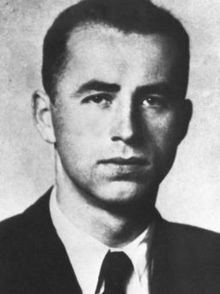
Alois Brunner
It was only 80 days later that Brunner left Nice again and in that period he had over 2,000 Jews sent to their deaths.
While the Wehrmacht was already retreating from France, Brunner had 1,327 Jewish children arrested and deported in Paris between in July 1944. He left Paris on August 17, a week before the liberation of the French capital, on the last train from the Drancy transit camp with deported people personnel. Brunner's intention was to use the deportees as potential hostages.
In total Brunner had an estimated 23,500 Jews deported from France to the death camps. From September 1944 to March 1945 he extinguished the Jewish underground movement in Slovakia and headed the Sereď concentration camp, from where he had approximately 11,500 people deported to Auschwitz, Sachsenhausen, Bergen-Belsen, and Terezín for extermination.
Alois Brunner is one of the top Nazis who managed to escape after the war and always remained free. He allegedly died in Damascus around 2010.
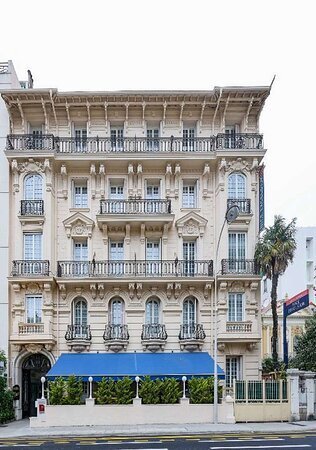
Modern-day Hotel Excelsior
The Hotel Excelsior plaque was inaugurated by the mayor Christian Estrosi in 2008. In his speech he said that the hotel today still bears the traces of Jewish suffering. All those innocent man, women and children who thought Nice would be a safe place.
April 16, 2022
Free Easter Books

🐣 Turn Your Easter Eggs into Easter Books 📚
Happy Easter, everyone!
I hope you have a lovely time in whatever way you celebrate. I’ve teamed up with other Christian and inspirational authors to offer you a free selection of great reads that will lift your spirits.
My WW1 novel In Picardy’s Fields isn’t Christian per se but certainly inspirational. Especially in these trying times when war is once again disrupting the world stability. So if you haven’t read my prequel to The Resistance Girl Series is your chance.
There are plenty of other great books on offer. It’s only for a limited time, so do download them now! As many as you like!
Download your free books hereApril 9, 2022
How SOE Came Into Being
First and foremost… this is a simplified version of the various departments and organizations that were involved in the establishment of the Secret Operations Executive in July 1940.
I will bundle all these blog posts at the end and provide them with an extensive reading list for those of you who want to know the more complicated truth. 😁
British military Intelligence services had been greatly neglected between the two world wars, but with the uptick of Nazi aggression in Germany, the need to revitalize this type of warfare became apparent.
The Intelligence Corps, that had been created during the First World War, had been dissolved in 1929. Any knowledge gathered in that war was either lost or outdated, so when Hitler annexed Austria (the Anschluss) in March 1938, the British Foreign Office woke up to the stark realization it needed to up its Intelligence game.
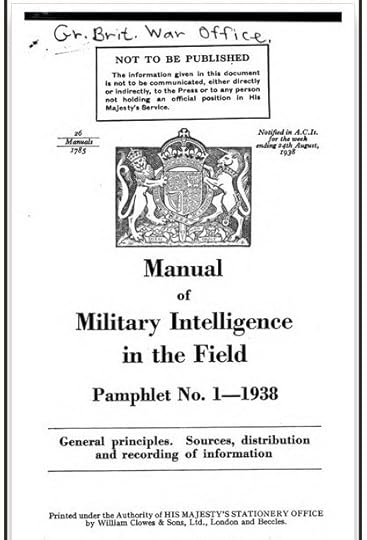
Title page of the Manual of Military Intelligence
The 1922(!) edition of the Manual of Military Intelligence served for the renewed 1938 guide on how to recruit businessmen, lawyers, bankers, and other civilian professionals with language skills for Intelligence work in the event of hostilities. The link gives you the revamped 1938 edition.
It goes without saying that the Germans were much more advanced regarding counterespionage, infiltration, radio interception, etc. With devastating outcomes for the many British-trained secret agents dropped behind enemy lines during WW2.
But I'm getting ahead of myself here.
Already at the end of March 1938, the Secret Intelligence Service (SIS, also known as MI6) - which was under the control of the Foreign Office, formed a section called Section D. The "D" most likely standing for "Destruction". Section D was headed by Lieutenant-Colonel L.D. Grand. Its professional aim was to stir up resistance to the Germans in Europe by acts of sabotage. Interesting side note: on the Section D was a man by the name of Guy Burgess, who was already working for the Soviet Union as a spy.
The very existence of Section D was officially denied for decades after the war, but it was this Section that would eventually provide Special Operations Executive (SOE) with a nucleus of secret serviceman. They did, of course, not come from the mainstream SIS, which continued to be at loggerheads with SOE throughout the war.
On 10 May 1940, the day the 'phoney war' ended with the start of the Blitzkrieg offensive into Holland and Belgium was the same day Winston Churchill became Prime minister. On 16 July Churchill authorized the creation of SOE, a department that was to deal with subversion, sabotage, and irregular warfare, with Section D as one of its organizations. The Minister or Economic Warfare, Hugh Dalton, who was politically responsible for SOE, noted in the 16 July entry of his diary that Churchill had told him, "And now go and set Europe ablaze." Dalton adopted the methods of the Irish Republican Army (IRA) during the Irish War of Independence as a model for the organization.
More on the leadership of SOE - both the people politically responsible and the executive directors - in the next blog post. Here's the most colorful of them already: Brigadier-General Colin Gubbins, involved with SOE from the start but its executive director as of 1943.
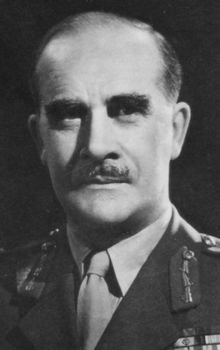
General Colin Gubbins
April 2, 2022
Two Resistance Girl books for FREE

Free download of The Norwegian Assassin and The Diamond Courier
I’m in spring mood, so I’ve made two of my bestselling books in The Resistance Girl Series free for 5 days. The offer expires at the end of this weekend.
The interest for the promo has been enormous with almost 8,000 downloads already! Especially The Norwegian Assassin is getting ahead of itself. 😁 At some point it was at #65 in the overall ranking of all free book in the Amazon store. Securely in the top 100. Thank you, all of you who made that possible.
So grab your copies for the 2 books now. The offer is until midnight on Sunday 3 April! Oh, and please leave a review if you enjoy my stories! 🙏
📖 Happy reading 📖
Download The Diamond Courier Download The Norwegian Assassin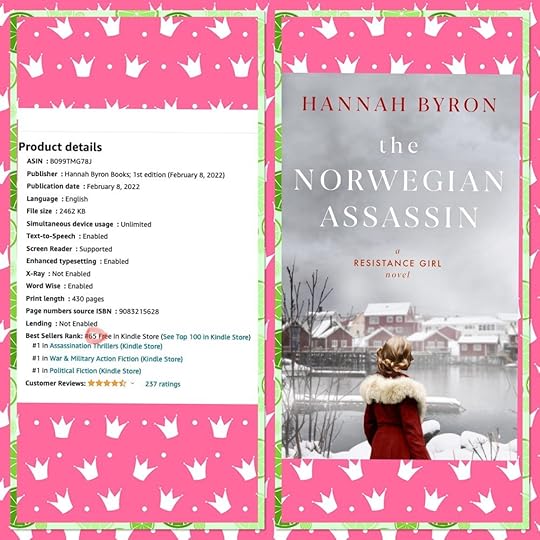
March 27, 2022
My Research into the Secret Operations Executive (SOE)
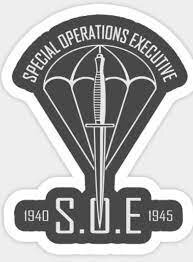
For my new book, The Highland Raven, I’m diving head-long into a new research: the British Intelligence Organization: Secret Operations Executive, abbreviated SOE.
The Special Operations Executive (SOE) was a secret British World War II organization that existed from 22 July 1940 until its official dissolution on 15 January 1946.
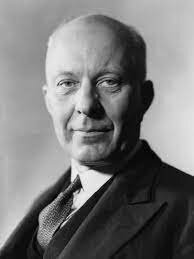
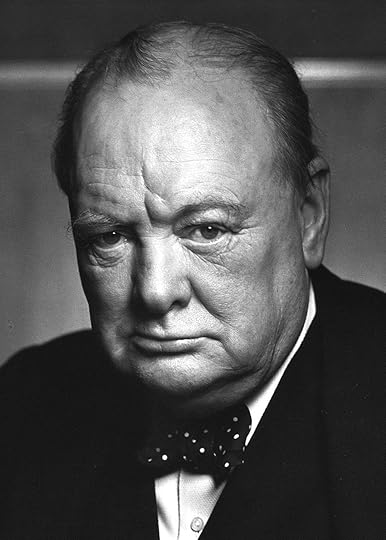
Hugh Dalton and Winston Churchill
SOE fell under the responsibility of the Ministry of Economics Warfare headed by Hugh Dalton. Winston Churchill breathed life into SOE with as its purpose conducting espionage, sabotage and reconnaissance against the Axis powers (Italy and Germany) in occupied Europe. Or, as Churchill put it: “to set Europe ablaze”. A secondary purpose was to aid and strengthen local resistance movements and to exchange intelligence information.
Later in WW2, SOE also operated in Japan-occupied Southeast Asia, but for my new book, The Highland Raven, I will only focus on SOE Section F. (France). More on that research later. Lets get a complete overview of SOE first.
Initially, SOE was also involved in the formation of the Auxiliary Units, a top secret “stay-behind” resistance organization which would have been activated in the event of a German invasion of Britain.
Though - as I stated - I will focus mainly on SOE Section F, the overall organization operated in all occupied or attacked territories, except for the United States and the Soviet Union. Use was also made of neutral territory, including the planning, and preparing for neutral countries coming under attack by the Axis.
SOE employed over 13,000 people, about 3,200 of whom were women.
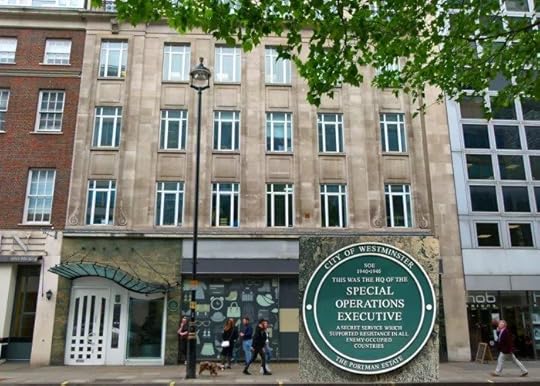
SOE Headquarters in 64 Baker Street, London
Few people outside the organization knew of its existence. It was indeed a top-secret group. By insiders it was often referred to as the "Baker Street Irregulars", as the SOE London headquarters were in Baker Street. Other nicknames were "Churchill's Secret Army" or the "Ministry of Ungentlemanly Warfare". Its various branches, and sometimes the entire organisation, were concealed for security reasons behind such names as the "Joint Technical Board" or the "Inter-Service Research Bureau", or fictitious branches of the Air Ministry, Admiralty or War Office.
SOE was dissolved after the war in 1946. Many of its secret dealings remained secret for many more decades. And a lot of evidence was destroyed in a fire in 1947. Moreover, the organization wasn't without controversy. More on that in later blog posts.

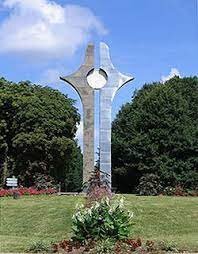
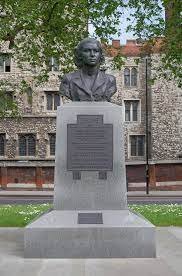

The official memorial to all those who served in the SOE was unveiled on 13 February 1996 on the wall of the west cloister of Westminster Abbey by Queen Elizabeth The Queen Mother. A further memorial to SOE's agents was put on display in October 2009 on the Albert Embankment in London. The Valençay SOE Memorial honors 104 SOE agents who lost their lives while working in France. And there are plenty of other memorials that honor the brave men and women who served as secret agents in SOE.
More on that later, too.
Preorder The Highland Raven here


